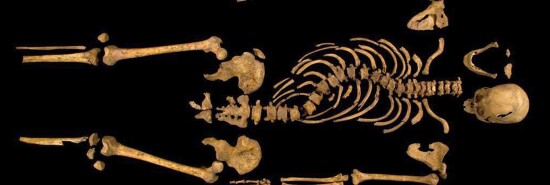
Skeletons don’t have gender? Richard III would disagree
Tiana Lowe
Riley Gaines, a Division I swimmer who competed against transgender swimming celebrity Lia Thomas, went viral last week when asking a University of Pittsburgh anthropology professor a simple question: “If you were to dig up a human, two humans, 100 years from now, both man and woman, could you tell the difference, strictly off of bones?”
The online rancor came not because of the question but rather professor Gabby Yearwood’s assertion that, no, an anthropologist could not determine the gender of a centuriesold skeleton. The denial is not only absurd to the average Joe sensible enough to see the difference between the shapes of skeletons, but especially to ostensible experts who know the details of that difference. For one illustrious example of the immutable binary of biological sex, consider the case of the discovery of the lost corpse of Richard III.
Richard III died in 1485, the last English king to be killed in battle. Posthumously painted as a usurper by Tudor propaganda, Shakespeare’s eponymous play included, the English were evidently unconcerned that the whereabouts of Richard’s body were unknown in the centuries after his death, a consequence of Henry VII’s conquest of his throne. After a decade of historians working together to plot the probable location of Richard’s body, a 2012 excavation succeeded in finding his corpse under a parking lot — a full 527 years after his death.
How did the scientists determine that the skeleton found was indeed a medieval king? The University of Leicester archaeologists on site could immediately identify that the body was an adult human man between his late 20s and his late 30s. The slender skeleton did not match the fabulations of Shakespeare and Thomas More, but it did have severe scoliosis, which “would have probably lifted his right shoulder higher than his left,” per the University of Leicester.
In the end, the mtDTA obtained from a 16th great-grandson, though solely related through the female line, confirmed that the body was indeed Richard III. While patrilineally inherited Y-DNA could theoretically be of use in determining identity, Richard did not share the same Y-DNA as four of five documented descendants of a male-line descendant of Richard’s ancestor Edward III. Why? Somewhere in the line, there must have been a case of false paternity.
In conclusion, not only are scientists able almost immediately to identify the gender of a 500-year-old corpse. For the most reliable confirmation of the corpse’s identity, they must rely on DNA that can only be passed from women. However much activists may wish to complicate gender as a social construct, biology as a science refuses to break from the binary.
